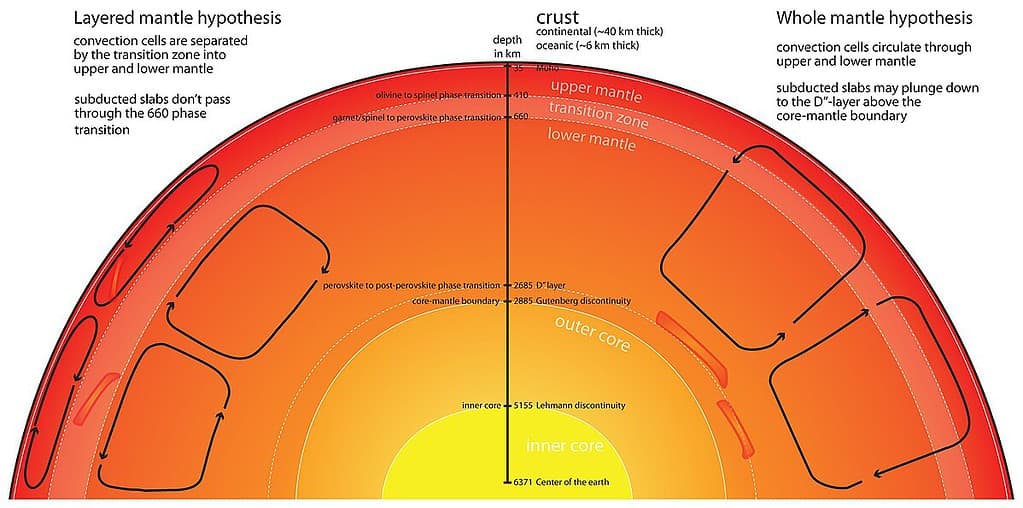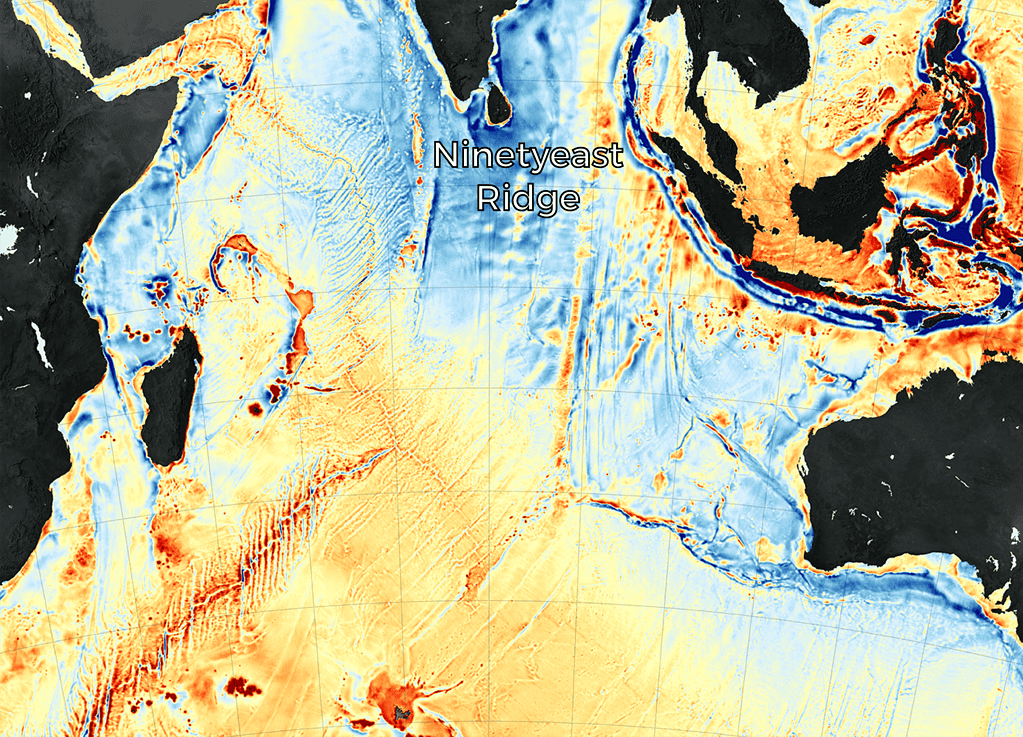
The deep oceans are far from flat. They feature ridges, trenches, seamounts, and valleys, creating a diverse and dramatic underwater landscape shaped by tectonic activity and volcanic processes. Among this landscape, the Ninetyeast Ridge is one of the most impressive features.
It stretches over 5,000 kilometers beneath the Indian Ocean, making it the Earth’s longest linear volcanic ridge. It also has an average width of around 200 km and a top height of 3.5 km. A new research employing advanced geophysical techniques concludes that the ridge was formed by a geological “hotspot”, challenging assumptions about how plumes of molten material from the mantle move and interact with tectonic plates.
What’s a hotspot?
We tend to think of the Earth’s surface as stationary but in reality, it moves around quite a bit — just very slowly. The Earth’s outer shell (called the crust) is divided into large, rigid plates. These plates move on the semi-fluid mantle beneath. Convection currents in the mantle (with the hot mantle floating to the surface and the cooler, denser mantle going downwards) are what push these tectonic plates. This interaction shapes the entire planet’s surface, creating mountains, earthquakes, and volcanoes.

In some areas, the plates move away from each other, forming new bits of crust, as seen at mid-ocean ridges. In other areas, called convergent boundaries, one plate dives beneath another, causing mountain ranges or deep ocean trenches. Hotspots are special areas.
Unlike most volcanic activity, which occurs at tectonic plate boundaries, hotspots can form in the middle of tectonic plates. They are powered by mantle plumes—columns of hot, buoyant rock rising from deep within the Earth. These hotspot plumes are stationary; as tectonic plates move over these stationary plumes, they create features like island chains or ridges, such as the Hawaiian Islands or the Ninetyeast Ridge. The movement of plates over hotspots leaves a trail of volcanoes that can help scientists track the plates’ past movements and understand mantle dynamics.
At least, that was the theory until now.
The new data suggests the Ninetyeast Ridge, and the underlying Kerguelen hotspot, suggests that hotspots are not as static as we thought.
Using precise Argon dating methods (40Ar/39Ar) and a technique called seismic tomography, researchers have mapped the volcanic progression along the ridge with unprecedented accuracy. This work reveals that the Kerguelen hotspot exhibited variable motion, influenced by interactions with the Indian–Antarctic spreading ridge. These findings mark a significant departure from earlier models that assumed a constant volcanic progression rate.

Seeing into the bowels of an underwater mountain
Seismic tomography is a technique that uses seismic waves generated by earthquakes or artificial sources to create three-dimensional images of Earth’s interior. These waves travel at different speeds depending on the density, temperature, and composition of the material they pass through. By analyzing the travel times and paths of seismic waves, scientists can map structures in the mantle, such as mantle plumes and ponding zones — all key to understanding hotspot dynamics.
Geochronology methods, particularly 40Ar/39Ar dating, were used to determine the ages of volcanic rocks along the Ninetyeast Ridge. This technique measures the decay of radioactive isotopes in minerals, specifically the ratio of argon isotopes, to calculate the time since the rock solidified.
Combining these ages with the plate movement history and seismic imaging, the study reconstructed the volcanic progression of the ridge and the motion of the Kerguelen hotspot over millions of years, providing a comprehensive picture of how the mantle plumes interact with the crust.

The study’s main conclusion is that the Kerguelen hotspot, responsible for creating the Ninetyeast Ridge, exhibited significant motion over time. The hotspot moved due to influence by interactions with the Indian–Antarctic spreading ridge.
The idea that hotspots can also move around is not new, but it’s very difficult to prove, says Dr. Hugo Olierook from Curtin’s School of Earth and Planetary Sciences, one of the study’s authors.
“Unlike most volcanic hotspots that remain stationary in the mantle and create volcanic trails as tectonic plates drift over them, this study found that the hotspot responsible for the Ninetyeast Ridge moved by several hundred kilometres within the mantle over time,” Olierook said.
“This kind of hotspot movement is thought to be common but is hard to prove and has only previously been demonstrated for a few hotspots in the Pacific Ocean, making this the first documented case in the Indian Ocean.”
What this means for geology
The dynamic behavior of the Kerguelen hotspot carries significant implications for reconstructing Earth’s tectonic history. If hotspots are mobile, they cannot serve as fixed reference points for tracking plate movements. This necessitates a reevaluation of global plate motion models, particularly those relying on hotspot tracks.
Moreover, the study highlights the influence of regional mantle convection over large-scale mantle processes. Similar mobility patterns observed in Pacific hotspots, like those forming the Hawaiian Islands, reinforce the idea that hotspot motion is shaped by localized mantle dynamics rather than global mantle flow.
This doesn’t mean anything major. It’s not like we need to rewrite the geology books, but it’s a potential improvement to our existing models.
“For years, rough age estimates of the Ninetyeast Ridge have been used to construct models of how Earth’s tectonic plates moved and reconfigured”, says co-author Professor Fred Jourdan, from Curtin’s School of Earth and Planetary Sciences and the John de Laeter Centre. “By using high-precision dating we can refine these models significantly, leading to better insights into ancient continental movements.”
Other hotspots may reveal similar features.
The study was published in Nature Communications.









